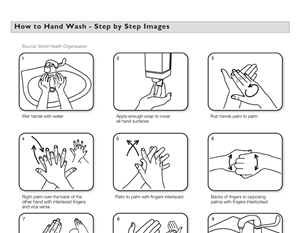While working as a travel nurse, you will find that some patients require the use of contact precautions during treatment. Although this is a necessary skill for the field, you may need to brush up on what the guidelines for best practice are.
When contact precautions matter
According to the Centers for Disease Control and Prevention, there are a number of specific steps you need to take to ensure the safety of patients who are suffering from:
- typhoid
- smallpox
- hepatitis A
- Methicillin-resistant Staphylococcus aureus
- Clostridium difficile
- Vancomycin resistant enterococcus
- respiratory syncytial virus
The necessary equipment
In order to prevent the spread of bacteria, you will be required to wear personal protective equipment. Some of the necessary equipment includes:
- gloves
- goggles
- gown
- mask
Additionally, you should make sure to keep your hands away from your face, limit the number of surfaces you touch and regularly wash your hands. The CDC also recommends working from clean areas to dirty ones to avoid further contamination for the patient. You should replace any of your protective equipment if it has become torn or heavily contaminated with bacteria as well.
Protocol with visitors
As a travel nursing professional, you should make sure that there is a sign on the patient's door, so that the rest of the staff knows what protocol is. It is also important that visitors are aware of the situation. These individuals should be instructed to:
- not touch dressings, tubes, bed sheets and any other supplies in the room that the patient may later be in contact with
- wash their hands when entering and exiting the room
- refrain from going into other patient rooms following a visit
Be sure that you tell visitors about this information and let them know to ask you or another RN if they have any questions. It's important that these guidelines are handled with care.
Proper handwashing techniques
Be sure that you explain to visitors and unfamiliar staff members what the proper method for washing their hands are when dealing with patients who require contact precautions. Using soap and warm water, hands should be rubbed together for 15 seconds to ensure that all surfaces are covered. After rinsing thoroughly, a paper towel should be used to dry the hands. The towel should also be used to turn off the faucet before being disposed of.
Improving staff compliance
Putting a sign up to inform people that contact precautions should be used is a great start for ensuring patient safety, but there may be other things you can do on travel nursing jobs to improve compliance of staff members. Of course, you'll want to make sure that your patient is placed in a private room, but what else can you do? For starters, make sure that all medical staff is informed of the situation and provided details regarding the proper techniques for administering care. By keeping these lines of communications open, your colleagues should feel comfortable discussing any questions they have during the patient's stay. If you notice that someone is neglecting protocol, feel free to bring it to his or her attention.

